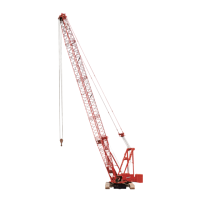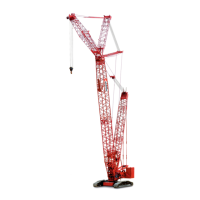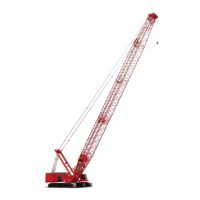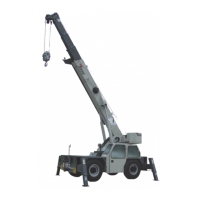Manitowoc Published 05-16-17, Control # 233-03 1-5
999 SERVICE/MAINTENANCE MANUAL INTRODUCTION
temperatures, exposure to moisture or dust in work
area, high contaminants in the fluid, or adding fluid
of unlike viscosity or chemical composition. A
program to test or replace hydraulic fluid at
scheduled times must be established for efficient
operation of all hydraulic systems.
NOTE: See Section 9 Lubrication Guide for recommended
replacement of hydraulic system fluid.
Digital display screen displays hydraulic fluid temperature in
the reservoir.
Hydraulic fluid vacuum is a pressure between 7 and 18 psia
(0,5 and 1,2 bar absolute) depending on engine speed,
ambient temperature, and filter condition. A system fault
exists for suction pressure, but there is not a displayed
pressure.
Shut-off Valve
A hydraulic shut-off valve is located between tank and tank
suction manifold. Close this shut-off valve when performing
maintenance on hydraulic systems. Before starting engine,
always check that the hydraulic tank shut-off valve is
open.
Supercharge Filter Manifold
Supercharge filter manifold supplies fluid to all system
pumps except the auxiliary drum pump. When shut-off valve
is open, fluid flows from tank to supercharge pump through
tank suction manifold. Supercharge pump supplies hydraulic
fluid to supercharge filter manifold. Filters must be changed
when system fault alerts are enabled and digital display
screen indicates that filters need to be serviced.
Return Manifolds
Return fluid from closed-loop auxiliary brake valve, motor
servos, and pump case drains is routed through main return
manifold and cooler before entering hydraulic tank. Main
return manifold has a 25 psi (1,7 bar) bypass that allows fluid
to bypass cooler if it becomes plugged. Return fluid from
closed-loop relief valves, brake valves, drum pawls, and
counterbalance pin cylinders returns to other return
manifold, bypassing cooler before entering hydraulic tank.
Thermal Bypass Valve
Connected to the lower right side of the radiator is a
thermostatically controlled valve. At 140°F (60°C), the valve
begins to open, allowing return oil to flow to the cooler.
Hydraulic Pumps
See Figures 1-2 or 1-3
NOTE: See hydraulic pump and motor manufacturer’s
manual for complete information on hydraulic
pumps and motors.
Supercharge pump is a fixed displacement gear pump that
draws hydraulic fluid from suction manifold and supplies
make-up hydraulic fluid to supercharge filter manifold. Each
closed-loop system, except the auxiliary drum, draws
hydraulic fluid from supercharge filter manifold as needed.
Auxiliary drum system draws hydraulic fluid directly from
suction manifold.
Variable displacement, axial piston pumps are used in all
closed-loop systems. Each pump operates in a bi-directional
closed-loop system. Each pump has a charge pump, EDC
(Electrical Displacement Control), cylinder block where
pistons are positioned axially around a drive shaft, a charge
pressure relief valve, and two multifunction valves.
Each system pump has a gerotor type gear charge pump
that is internally mounted on the end of each pump system
drive shaft. Charge pressure fluid provides cooling, positive
pressure in low-pressure side of the closed loop, control
pressure for pump servo, and make-up fluid for internal
leakage. System charge pump draws fluid directly from
supercharge filter manifold and delivers it to closed-loop
system at a charge pressure of approximately 350 psi (24
bar). Charge pressure depends on engine load/speed and
pressure relief valve settings. Rear drum pump supplies
system flow to operate upper and lower accessory valves in
Crane Setup mode and its charge pump supplies
pressurized flow for low pressure accessories during normal
operation.
When a system control handle is moved, the PC input
voltage polarity to pump EDC is either negative or positive as
required for operation command direction. Pump EDC tilts
swashplate to stroke pump to perform the operation
command. Hydraulic fluid displaced by motor pistons,
returns to system pump through non- pressurized side of
closed-loop system.
Pump pistons reciprocate within cylinder block as the block
rotates. Lengthening stroke of each piston draws low-
pressure return fluid from motor into the cylinder block. As
the stroke shortens, fluid is pushed out of pump piston
cylinder into high-pressure line to motor. Swashplate tilt
angle determines the volume of fluid that can be pumped to
motor. Increasing swashplate tilt angle increases piston
stroke length, causing more fluid to be pumped to motor.
Each pump has two multifunction valves that consist of
system relief valve and charge flow make-up check valve.
Load drum pumps have a pressure limiting relief valve and a
flow restrictor across high-pressure side and low-pressure
side. Pump system multifunction valves control maximum
system pressure and protect each pump system from
damage by limiting pressure spikes in each operating
direction. When preset loop system pressure is reached,
multifunction valves limit system pressure by de-stroking
pump or transferring fluid from high-pressure side to low-
pressure side. Pressure settings of multifunction valves for
each pump is listed in Table 1-1
. Limits should not be
reached unless there is a failure in the system.
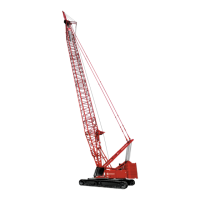
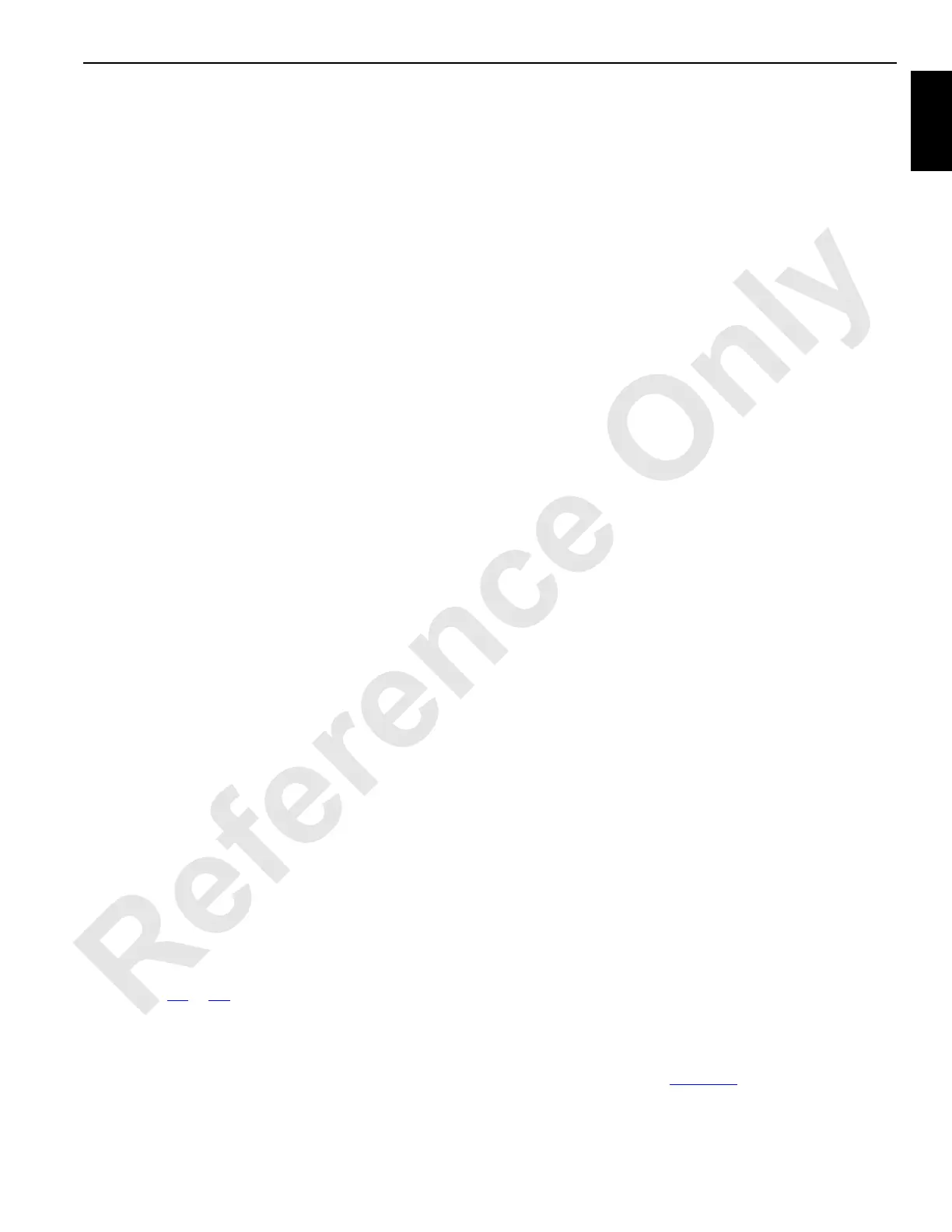